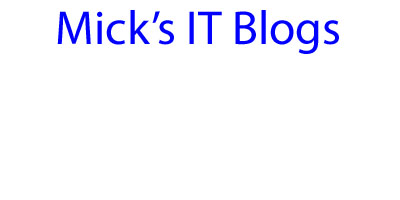I needed to install .Net Framework 4.7 on all systems. We no longer manage windows updates via SCCM, so we needed to deploy it as an application. I downloaded the two MSU files, 32-bit and 64-bit, from the Microsoft Update Catalog.
This script checks the system architecture and then knows which installer to execute. I have included the return codes for reboot required and already installed. The script converts those to normal SCCM return codes, 0 and 3010.
You can download the script from here.
<#
.SYNOPSIS
Install .Net Framework 4.7
.DESCRIPTION
This script will install .Net Framework 4.7 using the MSU file. It is written to accommodate both x86 and x64 versions. The script will also convert the WUSA.EXE return codes to standard SCCM return codes.
.NOTES
===========================================================================
Created with: SAPIEN Technologies, Inc., PowerShell Studio 2017 v5.4.143
Created on: 9/15/2017 10:45 AM
Created by: Mick Pletcher
Filename: installDotNet47.ps1
===========================================================================
#>
[CmdletBinding()]
param ()
function Get-Architecture {
<#
.SYNOPSIS
Get-Architecture
.DESCRIPTION
Returns whether the system architecture is 32-bit or 64-bit
.EXAMPLE
Get-Architecture
.NOTES
Additional information about the function.
#>
[CmdletBinding()][OutputType([string])]
param ()
$OSArchitecture = Get-WmiObject -Class Win32_OperatingSystem | Select-Object OSArchitecture
$OSArchitecture = $OSArchitecture.OSArchitecture
Return $OSArchitecture
#Returns 32-bit or 64-bit
}
function Get-RelativePath {
<#
.SYNOPSIS
Get the relative path
.DESCRIPTION
Returns the location of the currently running PowerShell script
.NOTES
Additional information about the function.
#>
[CmdletBinding()][OutputType([string])]
param ()
$Path = (split-path $SCRIPT:MyInvocation.MyCommand.Path -parent) + "\"
Return $Path
}
function Install-MSUFile {
<#
.SYNOPSIS
Install Windows Update
.DESCRIPTION
This function installs windows update MSU files.
.PARAMETER FileName
Name of MSU file
.NOTES
Additional information about the function.
#>
[CmdletBinding()]
param
(
[ValidateNotNullOrEmpty()][string]$FileName
)
$RelativePath = Get-RelativePath
$Executable = $env:windir + "\System32\wusa.exe"
$Parameters = $RelativePath + $FileName + [char]32 + "/quiet /norestart"
$ErrCode = (Start-Process -FilePath $Executable -ArgumentList $Parameters -Wait -Passthru).ExitCode
Return $ErrCode
}
$Architecture = Get-Architecture
If ($Architecture -eq "32-Bit") {
$ReturnCode = Install-MSUFile -FileName Windows6.1-KB4019990-x86.msu
} else {
$ReturnCode = Install-MSUFile -FileName Windows6.1-KB4019990-x64.msu
}
#Exit Return Codes
#2359301 -- Reboot Required
#2359302 -- Already Installed
If ($ReturnCode -eq 2359301) {
$ReturnCode = 3010
}
If ($ReturnCode -eq 2359302) {
$ReturnCode = 0
}
$ReturnCode
Exit $ReturnCode















0 comments:
Post a Comment